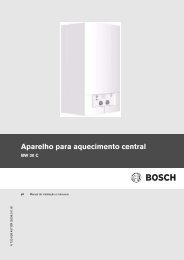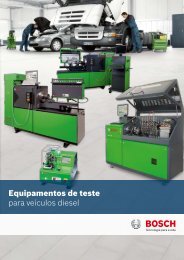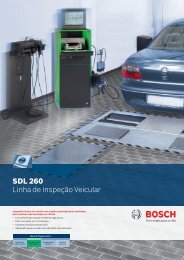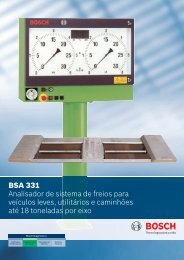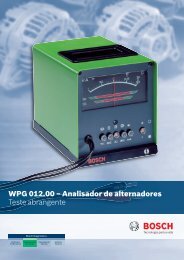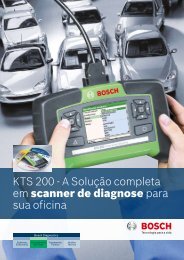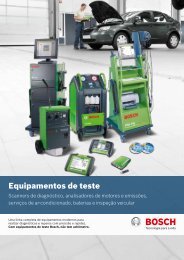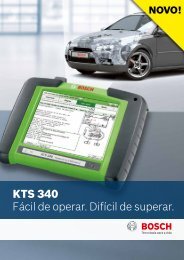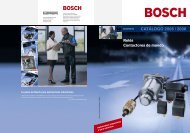Bosch Automotive A product history
Bosch Automotive A product history - Bosch worldwide
Bosch Automotive A product history - Bosch worldwide
- No tags were found...
You also want an ePaper? Increase the reach of your titles
YUMPU automatically turns print PDFs into web optimized ePapers that Google loves.
22 | Supplement 2 | Journal of <strong>Bosch</strong> History<br />
Motorization fuels demand<br />
The starter has the features typical of<br />
many <strong>product</strong>s brought to market by <strong>Bosch</strong><br />
in the period between the first world war<br />
and the first crisis in the automobile industry<br />
in 1926. Their aim was to eliminate the<br />
shortcomings in operation and safety that<br />
were coming to light as motorization really<br />
took hold. Wherever these shortcomings<br />
became apparent, Robert <strong>Bosch</strong> looked for<br />
new ideas that he then optimized, or inventions<br />
were made in-house that were then<br />
developed until they were ready for series<br />
<strong>product</strong>ion. The manually operated rubber<br />
wiper, developed by Prince Heinrich of<br />
Prussia, became the electric windshield<br />
wiper, the electric horn replaced the rubber<br />
bulb horn, and car heating systems consigned<br />
the hand warmers and long johns<br />
resorted to in the winter to the <strong>history</strong><br />
books. Finally, the direction indicator – or<br />
turn signals, as they have been known<br />
since 1949 – carried out the function<br />
previously performed by the driver‘s<br />
outstretched arm.<br />
Many of these <strong>product</strong>s – such as the<br />
horn, the windshield wiper, and the turn<br />
indicator – can be attributed to the work<br />
of Gottlob Honold, who also developed<br />
high-voltage magneto ignition. He was<br />
the company’s first head of development,<br />
setting up a department whose potential<br />
quickly became clear to <strong>Bosch</strong>. There are<br />
currently some 33,000 people working in<br />
research and development at <strong>Bosch</strong>, and<br />
this department was where it all started.<br />
Diesel and gasoline engine management<br />
In the era up until the 1920s, the automotive<br />
business sector was dominated by<br />
electrical components. However, <strong>Bosch</strong><br />
It was not only the manufacturers of<br />
stolid family sedans that favored <strong>Bosch</strong>.<br />
Exclusive carmakers such as Bentley and<br />
Bugatti also opted for the southwest<br />
German automotive supplier (c 1935).



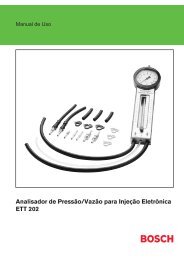

![Guia de instalação do ESI[tronic] Startcenter - Bosch](https://img.yumpu.com/53542449/1/190x135/guia-de-instalaaao-do-esitronic-startcenter-bosch.jpg?quality=85)
